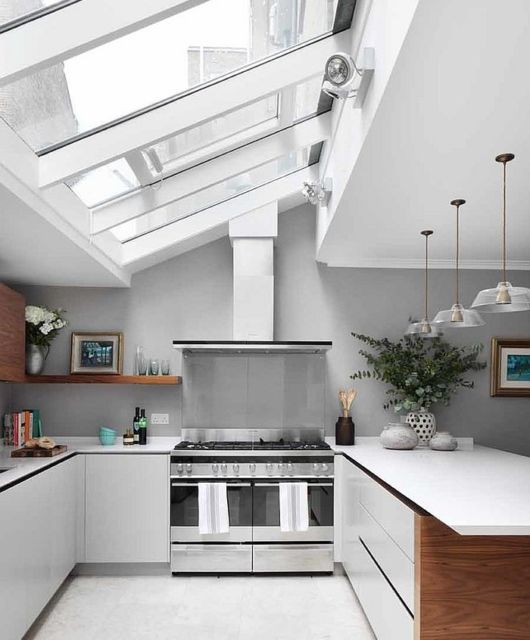Upgrade your kitchen’s ventilation system with a range hood designed for vaulted ceiling. Learn how to effectively install and optimize airflow in your kitchen space.

Introduction
A well-functioning range hood is essential for maintaining a clean and comfortable kitchen environment by removing cooking odors, smoke, and grease from the air. However, installing a range hood in a vaulted ceilings presents unique challenges and considerations. In this guide, we’ll explore the benefits of installing a range hood in a vaulted ceiling, discuss installation methods, and provide tips for optimizing airflow in your kitchen space.
Understanding: Range Hood In Vaulted Ceiling
Range hoods are essential kitchen appliances that help to improve indoor air quality by venting out pollutants generated during cooking. In vaulted ceiling kitchens, where the ceiling slopes upward, installing a range hood requires careful planning and consideration. Here’s why:
- Improved Ventilation: A range hood mounted in a vaulted ceiling can effectively capture and remove airborne contaminants, ensuring that your kitchen remains fresh and odor-free.
- Enhanced Aesthetic Appeal: By integrating a range hood into the design of your vaulted ceiling, you can create a seamless and visually appealing kitchen space that blends style with functionality.
- Optimized Cooking Experience: Proper ventilation provided by a range hood helps to prevent the buildup of heat, steam, and grease, creating a more comfortable and enjoyable cooking environment.
Installing a Range Hood in a Vaulted Ceiling
Installing a range hood in a vaulted ceiling requires careful planning and execution to ensure optimal performance and aesthetics. Follow these steps for a successful installation:
- Choose the Right Range Hood: Select a range hood model that is suitable for vaulted ceilings and compatible with your kitchen layout and cooking needs.
- Determine Mounting Location: Identify the ideal location for mounting the range hood, considering factors such as the stove’s placement, ceiling slope, and available space for ductwork.
- Prepare the Installation Site: Clear the area where the range hood will be installed, ensuring that it is free from obstructions and obstacles. If necessary, consult with a professional contractor to assess any structural modifications required.
- Install the Ductwork: Depending on the configuration of your kitchen and the range hood model, you may need to install ductwork to vent the exhaust air to the exterior of your home. Ensure that the ductwork is properly sized and installed to minimize airflow resistance and maximize efficiency.
- Mount the Range Hood: Carefully follow the manufacturer’s instructions to mount the range hood securely to the ceiling, ensuring that it is level and properly anchored.
- Connect Electrical Wiring: If your range hood requires electrical power, hire a licensed electrician to safely connect the wiring and install any necessary switches or controls.
- Test and Adjust: Once the range hood is installed, test its operation to ensure that it is effectively capturing and venting out cooking fumes. Make any necessary adjustments to the fan speed or airflow direction to optimize performance.
Optimizing Airflow in Your Kitchen
To maximize the effectiveness of your range hood in a vaulted ceilings kitchen, consider the following tips:
- Use the Correct Fan Speed: Adjust the fan speed of your range hood based on the type and intensity of cooking you’re doing. Use higher speeds for frying or grilling and lower speeds for simmering or light cooking.
- Clean and Maintain Regularly: Keep your range hood and filters clean to ensure optimal airflow and ventilation efficiency. Remove grease buildup and debris regularly to prevent clogs and maintain peak performance.
- Consider Additional Ventilation Options: In addition to a range hood, consider installing additional ventilation solutions such as ceiling fans or skylights to further improve airflow and circulation in your kitchen space.
- Consult a Professional: If you’re unsure about installing or optimizing your range hood in a vaulted ceiling, consult with a professional contractor or kitchen designer for expert advice and assistance.
Read too: Striped Schoolhouse Ceiling Light Fixtures: Unveiling the Timeless Charm
Conclusion
Installing a range hood in a vaulted ceiling can significantly enhance the functionality and aesthetics of your kitchen while improving indoor air quality and ventilation. By following the steps outlined in this guide and implementing effective airflow optimization strategies, you can create a comfortable and enjoyable cooking environment that meets your needs and enhances your culinary experience.